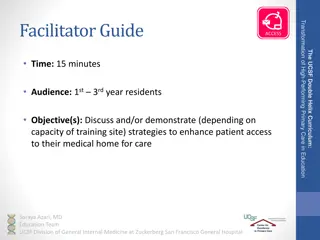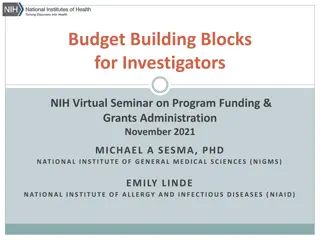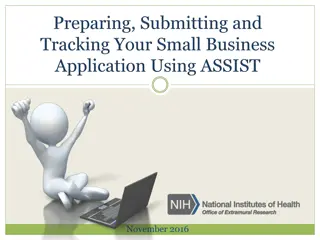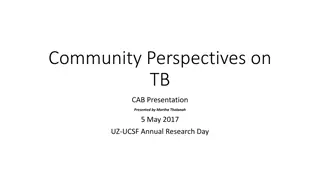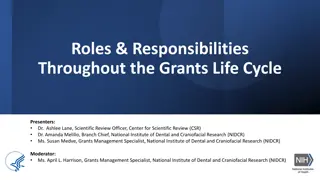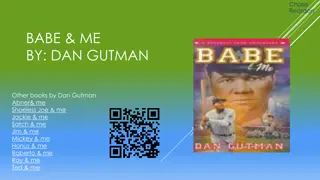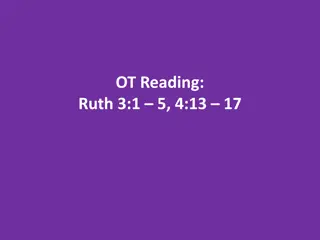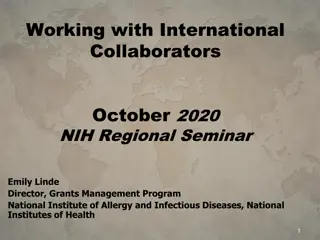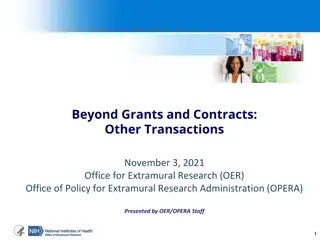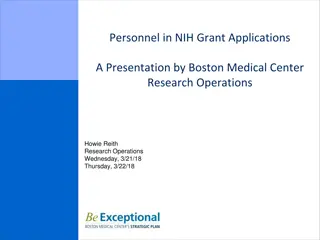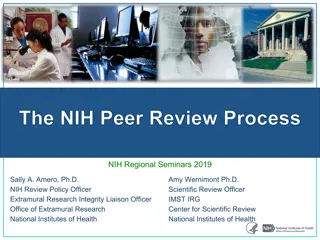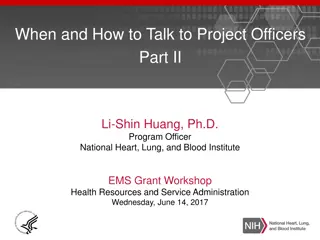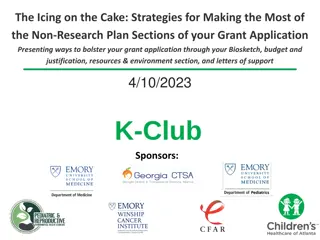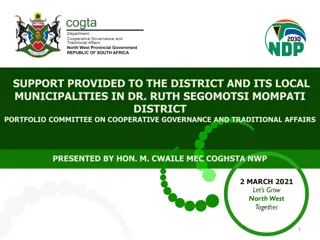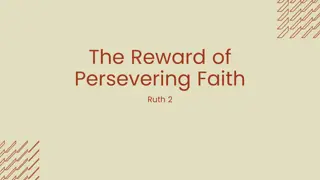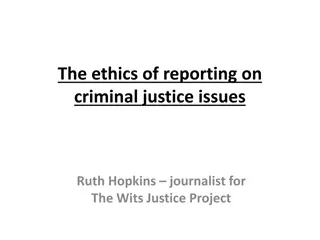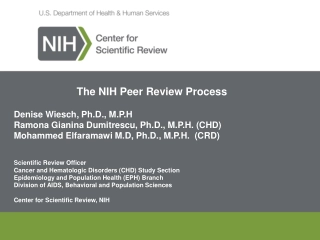Enhancing Communication in NIH Biosketch - Ruth Greenblatt, UCSF
"Learn how to effectively communicate key concepts to reviewers using the new NIH Biosketch format, including personal statements, positions, honors, and contributions to science. Ruth Greenblatt from UCSF provides insights on tailoring your materials for success in grant applications."
Download Presentation

Please find below an Image/Link to download the presentation.
The content on the website is provided AS IS for your information and personal use only. It may not be sold, licensed, or shared on other websites without obtaining consent from the author. Download presentation by click this link. If you encounter any issues during the download, it is possible that the publisher has removed the file from their server.
E N D
Presentation Transcript
THE NEW NIH BIOSKETCH AN OPPORTUNITY TO COMMUNICATE KEY CONCEPTS TO REVIEWERS RUTH GREENBLATT DEPT OF CLINICAL PHARMACY UCSF
THE NEW NIH BIOSKETCH Limited to 5 pages, including support Continues personal statement List of positions and honors New contributions to science Research support, including roles, and in order of relevance to the proposed project You need an eRA commons name
PERSONAL STATEMENT Do not reuse boilerplate text from project to project Write about how you are qualified for the role you will play in the proposed research, why you think it is important, and any other message you want to send reviewers You can include the most relevant publications here You need to do this yourself, pre-award staff will not have the knowledge you have to tailor this material to the proposal
POSITIONS AND HONORS Include current position, memberships and recent honors You can indicate that these are selected Select items that are most relevant to the proposal Include Federal committees, particularly recent If you do not have these kinds of experiences yet, avoid listing more limited awards most organized post doc and use the space for your personal statement
CONTRIBUTIONS TO SCIENCE Select material that supports your role in the proposed research Indicate what your research was and why it was impactful. Articulate impact by describing: How your work changed understanding or confirm important concepts? How your work influenced treatment, diagnosis, risk assessment, policy? How your work influenced subsequent studies, research hypotheses or methods
CONTRIBUTIONS TO SCIENCE: HIGHLIGHTED REFERENCES For each contribution, list up to 4 publications Include PMCID for any work published after 2007, or if recent, PMCID pending . Up date this next time you submit a biosketch Do not list in-progress or submitted.
FRUSTRATED BY THE LIMIT OF 4 REFERENCES? Utilize My Bibliography from NCBI to provide URL linkage to your full list of publications Insert a URL for your MyBibliography page. This will include all publically available publications since 2008 Those with PMCIDs Find this on My NCBI Reach via pubmed, or NCBI website (Natl Library of Medicine)
GETTING TO MY NCBI Log onto MY NCBI http://www.ncbi.nlm.nih.gov/sites/my ncbi/ Most often use your e-commons user name and password You will see Share Your Bibliography with this URL Copy the URL and insert into your NIH biosketch
RESEARCH SUPPORT Does not include % effort, total direct, etc Includes funding period, your role You now write a description of the project Write in order of most relevant to least relevant to proposed research
USING ONLINE RESOURCES TO GENERATE A BIOSKETCH UCSF Advance SciENcv Go to My CV Go to My Bibliography Select NIH Biosketch SciENcv box at bottom You may see a drop down menu of previous bios you have created You can create multiple profiles Themes, such as mentoring, different types of work you do You can create a new one, using check boxes to select contents



